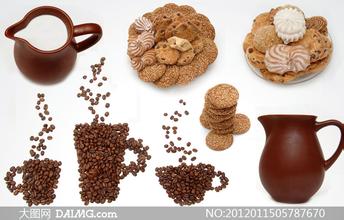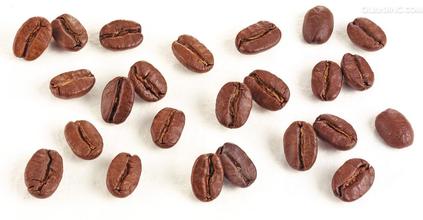Description and treatment of Coffee Flavor in Incht Manor, Guatemala
Description and treatment of Coffee Flavor in Incht Manor, Guatemala
Coffee cultivation at Incht Manor began in 1900. With a total area of 720 hectares, it maintains 470 hectares of primeval forest in order to maintain the natural and precious microclimate. To prevent the microclimate of the whole manor from being affected by excessive reclamation. The use of reasonable farming methods to protect soil nutrients, so that soil quality will not be gradually degraded by long-term cultivation, so as to maintain rich organic matter. In addition, the hardware facilities of the Incht treatment plant are complete, and the quality of the coffee is guaranteed in the later stage through orderly and scientific management. Incht is also very careful in the planting of coffee trees, whether in harvesting, pruning, or fertilization, coffee trees are carefully protected. The planting management of the whole manor has the advanced concept of symbiosis and win-win with ecology. As a result, Incht was certified by the Rainforest Alliance.
The coffee produced in Guatemala is one of the top coffee in the world, because Guatemala is a high-altitude volcanic terrain, and these volcanoes are the ideal places to grow coffee. Compared with other varieties of coffee, critics prefer this mixed flavor coffee with spicy flavor. The extra hard coffee beans here are a rare good coffee with full grains, delicious taste and balanced acidity. In addition, its giant coffee beans have attracted a lot of attention in Guatemala.
Coffee was really introduced into Guatemala in 1750 by Father Jesuit, and the coffee industry was developed by German colonists at the end of the 19th century. Today, most of the coffee industry's production takes place in the south of the country. There are seven major coffee producing areas in Guatemala, and the flavor of coffee produced in each area is different, but to sum up, Guatemalan coffee shows a mild and mellow overall texture, elegant aroma, and special and pleasant acidity similar to fruit acid, so it has become an aristocrat in coffee. Antigua Classic Coffee (AntiguaClassic) is highly recommended by global coffee connoisseurs.
There is a big temperature difference between hot and cold in this area. The temperature will drop to 0 degrees in the cold season. There is also little rainfall, which is a disadvantageous environment for coffee trees. But the geothermal heat of Agua Volcano produces the highest quality coffee. Harvest season from more than 600 collectors from the selection of La Tacita manor-specific collectors, the sense of responsibility of the collectors, self-consciousness, the work of making fine coffee training. It is understood that this year's harvest has dropped by 40% due to abnormal climate, but there is a very obvious awareness of coffee production due to the emphasis on quality. With regard to the coffee characteristics of the "La Tacita Manor" in Antigua, the water content of coffee is usually reduced after the drying process, and here is the method of drying to reduce the water content to 10% and then place it to 1112%. The potential of coffee that can pass this project is very high, and it is said to be very long-lasting. Guatemalan coffee has a strong aroma, even if you don't drink it, just smelling it is already a pleasure. Antigua coffee has a rich and velvety mellow, rich and lively aroma, and fine sour taste. When the attractive fragrance lingers on the tip of your tongue, there is an indescribable mystery. You may feel dull at the first sip, but as the coffee cools slowly, you will find it slightly sweet and be surprised by its depth.

Important Notice :
前街咖啡 FrontStreet Coffee has moved to new addredd:
FrontStreet Coffee Address: 315,Donghua East Road,GuangZhou
Tel:020 38364473
- Prev

Colombia Santa Rita Estate Coffee Bean Flavor Description Processing Variety Taste Characteristics Introduction
Colombia Santa Rita Estate Coffee Bean Flavor Description Processing Variety Taste Characteristics Introduction Arabica coffee accounts for about 65% 80% of the coffee beans in the world. Arabica beans are longer, flatter, fuller and greener in shape. Arabica coffee has a varied and broad flavor potential. Arabica coffee produced in different regions, at different altitudes, in different climates is usually
- Next

Description of flavor of coffee beans treated with Panamanian Hartman honey introduction of washing and sun grinding scale
Panamanian Hartman honey treatment coffee bean flavor description washing sun grinding scale introduction red wine treatment method with reference to the fermentation process of wine treatment, the selected coffee cherry was put into a sealed metal container for anaerobic fermentation, the PH value in the fermentation process, the type and number of bacteria involved in fermentation and other factors were purposefully controlled, even temperature and humidity
Related
- Does Rose Summer choose Blue, Green or Red? Detailed explanation of Rose Summer Coffee plots and Classification in Panamanian Jade Manor
- What is the difference between the origin, producing area, processing plant, cooperative and manor of coffee beans?
- How fine does the espresso powder fit? how to grind the espresso?
- Sca coffee roasting degree color card coffee roasting degree 8 roasting color values what do you mean?
- The practice of lattes: how to make lattes at home
- Introduction to Indonesian Fine Coffee beans-- Java Coffee producing area of Indonesian Arabica Coffee
- How much will the flavor of light and medium roasted rose summer be expressed? What baking level is rose summer suitable for?
- Introduction to the characteristics of washing, sun-drying or wet-planing coffee commonly used in Mantenin, Indonesia
- Price characteristics of Arabica Coffee Bean Starbucks introduction to Manning Coffee Bean Taste producing area Variety Manor
- What is the authentic Yega flavor? What are the flavor characteristics of the really excellent Yejasuffi coffee beans?

